The Geodesic Dome Greenhouse Shape
At the heart of the Growing Dome's exceptional performance lies its unique geodesic design, made of interconnected triangles. This ingenious structure, inspired by the principles of Buckminster Fuller, creates an incredibly strong and stable framework. As you will see, there are several benefits to utilizing the geodesic shape in our greenhouse design.
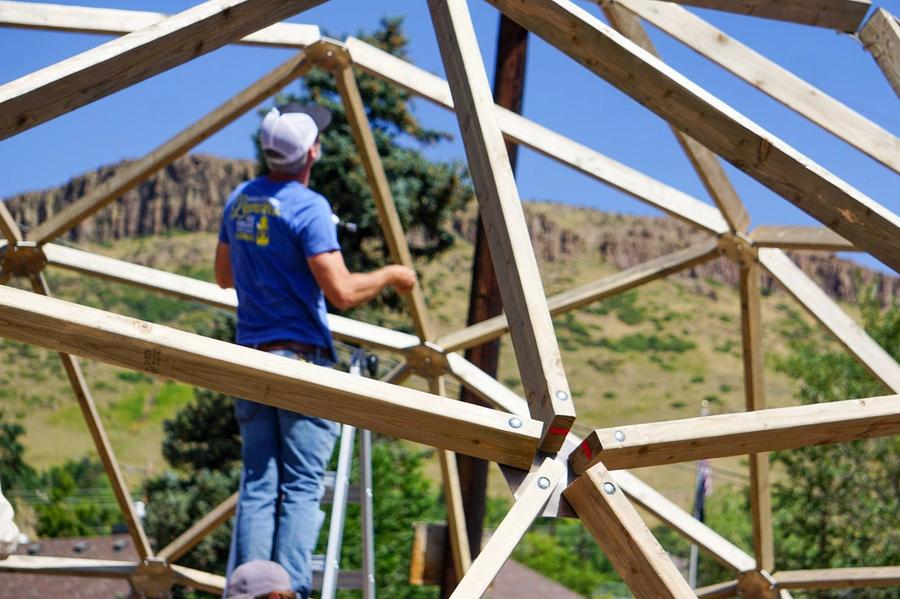
Naturally Wind-Resistant
Wind simply flows around the Growing Dome greenhouse. A rectangular greenhouse has a much larger surface area for the wind to push against, which could cause severe damage. Anchoring to the foundation wall as well as the above-ground pond helps secure the lightweight structure and makes this the best greenhouse for wind.
The standard engineered plans that come with our geodesic dome greenhouse kits are stamped for 115 mph wind loads, and we can work with an engineer if a higher wind load is required for your permitting process.
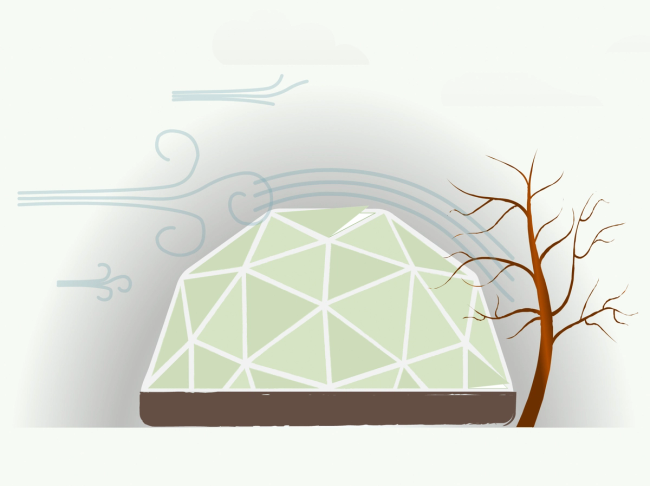
Designed for Heavy Snow Loads
The spherical shape of the geodesic dome readily sheds snow. Rarely is there any snow pushing down on the greenhouse structure. Only in the most extreme cases will snow pile up on the top, and even with the added weight, the structure will not buckle or collapse. For these special conditions, we can work with an engineer to make modifications to enhance the snow-load capacity for your climate.
On average, without additional engineering, our Growing Dome kits have a snowload capacity of 62 psf. The smaller domes have a greater snow load capacity, with the 15’ dome tested to 85 psf. With additional engineering and an ICF foundation, this rating can be increased to 120 psf.
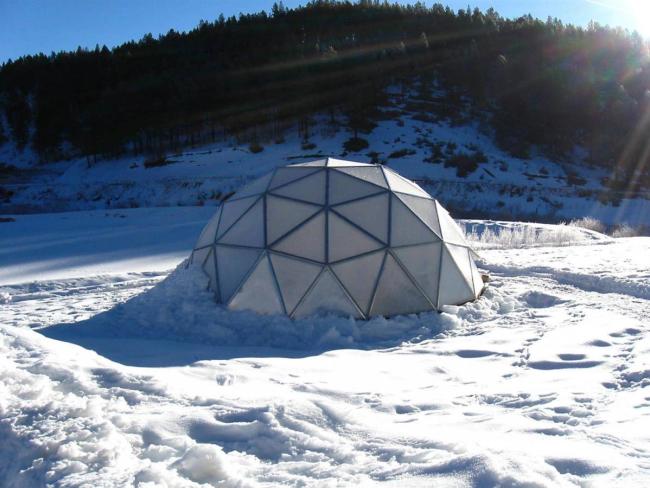
Consistent Solar Input
The Growing Dome's distinctive curved surface is a key design feature that provides a significant advantage in maximizing solar gain. Unlike conventional rectangular greenhouses, which are limited to substantial sunlight exposure primarily around midday and receive minimal input during the early morning and late afternoon hours, the dome's geodesic shape ensures consistent and efficient solar capture from sunrise to sunset.
This continuous solar gain is crucial for maintaining stable internal temperatures and stimulating plant growth. In a rectangular structure, the flat roof and vertical walls mean that direct sunlight only hits the surfaces at optimal angles for a limited time. Conversely, the spherical geometry of the Growing Dome ensures a portion of its curved surface is always perfectly oriented towards the sun.
This inherent design characteristic contributes to a more consistent internal climate, reducing the need for supplementary heating during cooler periods and potentially mitigating extreme temperature spikes. The result is a more uniform and favorable growing environment for plants, promoting healthier growth and a longer growing season.
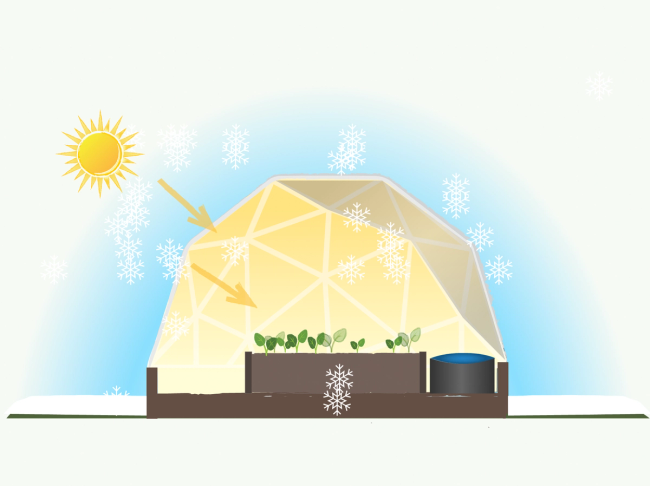
Energy Efficient
A geodesic dome, like the Growing Dome, offers superior heat retention compared to rectangular buildings. Its spherical design minimizes surface area relative to enclosed floor space, resulting in 40% less exterior surface through which heat can escape on a cold night. This structural efficiency is due to the principle that a sphere has the least surface area for a given volume.
In the summer months, too much heat from sun exposure can be a problem for any greenhouse. Growing Spaces includes additional features that also work together to keep the geodesic greenhouse cool, utilizing active and passive solar technologies.
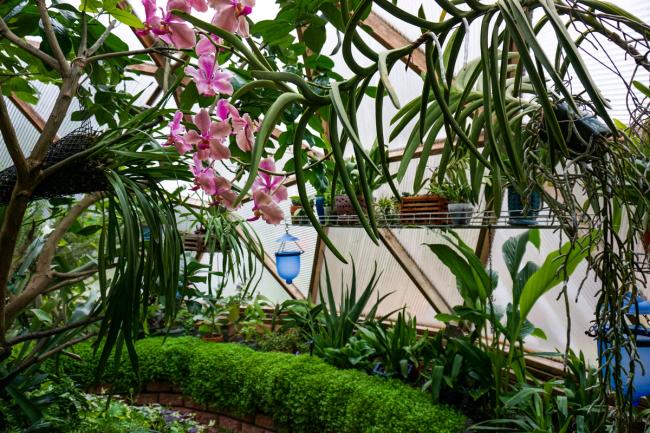
Explore the Additional Benefits of a Growing Dome’s Unique Features
Subscribe to Our Newsletter
Join our community to stay up to date
